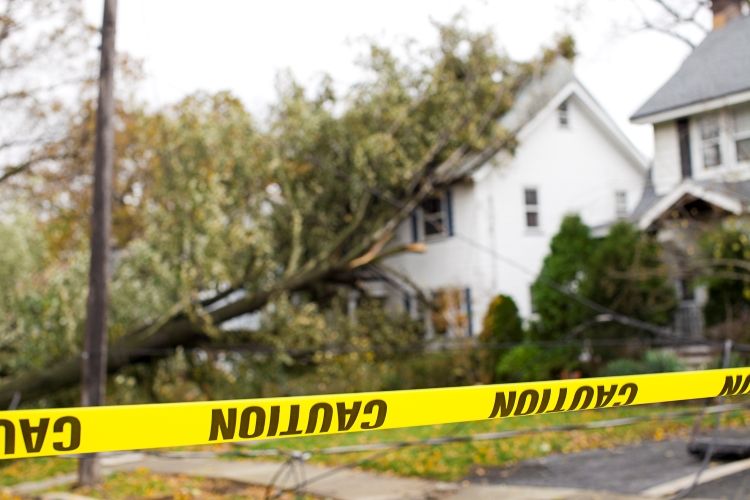Blog
Concurrent Cause Issues in Insurance: How to Unravel the Language
Property insurance policies are complex legal contracts. That’s because the insurance industry has its own language and processes that can be subject to multiple interpretations.
One of the terms that can be challenging to understand is concurrent causation. As severe weather events fueled by climate change become more frequent, property owners want to be sure they are covered for losses. However, weather-related property damage can result from multiple causes. For instance, high winds can cause roof damage, which can lead to water damage and then to mold.

This article will help you understand concurrent causes and insurance issues that can come along with them.
What Is Concurrent Causation?
| Concurrent causation is the term property insurance providers use to identify property loss or damage that is the result of two or more causes. One cause of loss may have coverage, while another does not. The causes of loss may occur simultaneously or one after the other. |
Legal precedents for concurrent causation date to lower court rulings in the 1980s. For example, California courts determined that if a covered risk increased the loss from an excluded risk, a policyholder could legally claim the complete loss.
In response, many insurance policies (property, casualty, and liability) began to include anti-concurrent causation (ACC) statements. These provisions help protect the insurer from increased liability and costs, such as paying the same claim more than once. Some ACC provisions list specific perils that are covered as well as the ones that are not covered.
However, not all state courts apply concurrent causation in the same way. Some seek to determine the proximate (or predominant) cause of a loss. If the court decides the proximate cause of the water and mold damage was the high wind, and the insured has a policy that covers wind damage, the additional losses should be part of the coverage. On the other hand, if the court decides that the proximate cause of the mold was flooding, not high wind, that damage may not be covered.
Examples of Concurrent Causation
Let’s look at earthquake coverage as an example of concurrent causation. A standard earthquake policy covers some of the losses and damage that an earthquake could do to your home or business, personal belongings or business property or stock inventory, or other property you own.
But what if the earthquake causes a dam to fail, leading to flooding? Is the cause of a loss the quake or the flood? And are you still covered?
| All losses stand on their own, and coverage is subject to the facts and circumstances of the individual situation, including the language in the specific policy at issue. Coverage also depends on the jurisdiction of the property and the issues of concurrent cause (CC) doctrine and efficient proximate cause (EPC). |
These terms have been heavily litigated over the years.
In general terms, the CC doctrine states that when two independent events (one that is covered by your policy and one that is excluded) combine to damage your home or business, the policyholder is entitled to recover losses if the covered event directly caused some of the damage.
However, the EPC doctrine states that recovery is allowed only if the covered cause was the primary cause of the loss to the property. Using the earthquake example, the insured must show that the quake was the substantial force behind the water damage.
What Does Your Policy Cover?
It’s essential to read your policy carefully to know which perils and which rules apply to your coverage. However, nothing is simple in policy interpretation. Here’s an example.
The state of Oregon defines EPC as “the active and efficient cause that sets in motion a chain of events which bring about a result without the intervention of any force, starting and working actively and efficiently from a new and independent source.”
That definition means that if there are multiple causes of a single loss in Oregon, the EPC “is the relevant cause for determining coverage under an insurance contract.” (See Naumes, Inc. v. Landmark Ins. Co. for the case that set this language.)
According to this legal precedent, if an earthquake in Oregon leads to the collapse of a dam that results in the flooding of the area nearby, the earthquake—not the flood—would be considered the cause of loss.
Of course, each loss must be evaluated on its own facts and policy language. In fact, there is another Oregon case that includes different language from the Naumes case. The policy language limits coverage to property damage “caused directly and immediately” by an event or peril. In that case, the court ruled that the “direct and immediate” language “looks back only to the closest cause in time.”
So, under the “direct and immediate” language and analysis, the flood in the previous earthquake scenario would be the cause of loss. Coverage would only be available if the policyholder had separate flood coverage.
| No one wants to find out after a severe weather event or other crisis that they don’t have the right property insurance coverage. |
Woodruff Sawyer has a team of professional claim consultants who can help you understand your coverage and help you navigate through the claim process. We also provide coaching and advocacy from the initial reporting of the claim to the final negotiations and conclusion. Reach out to us for more information.
Author
Table of Contents














